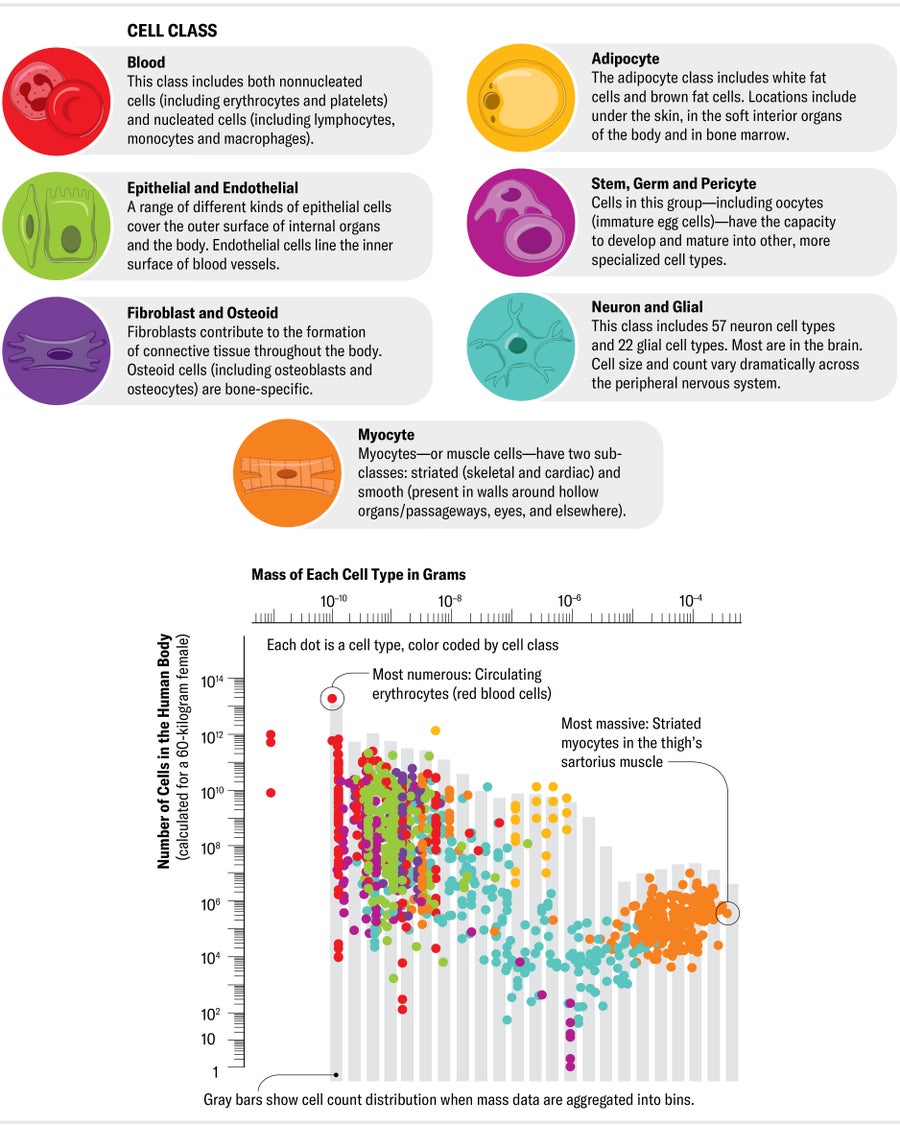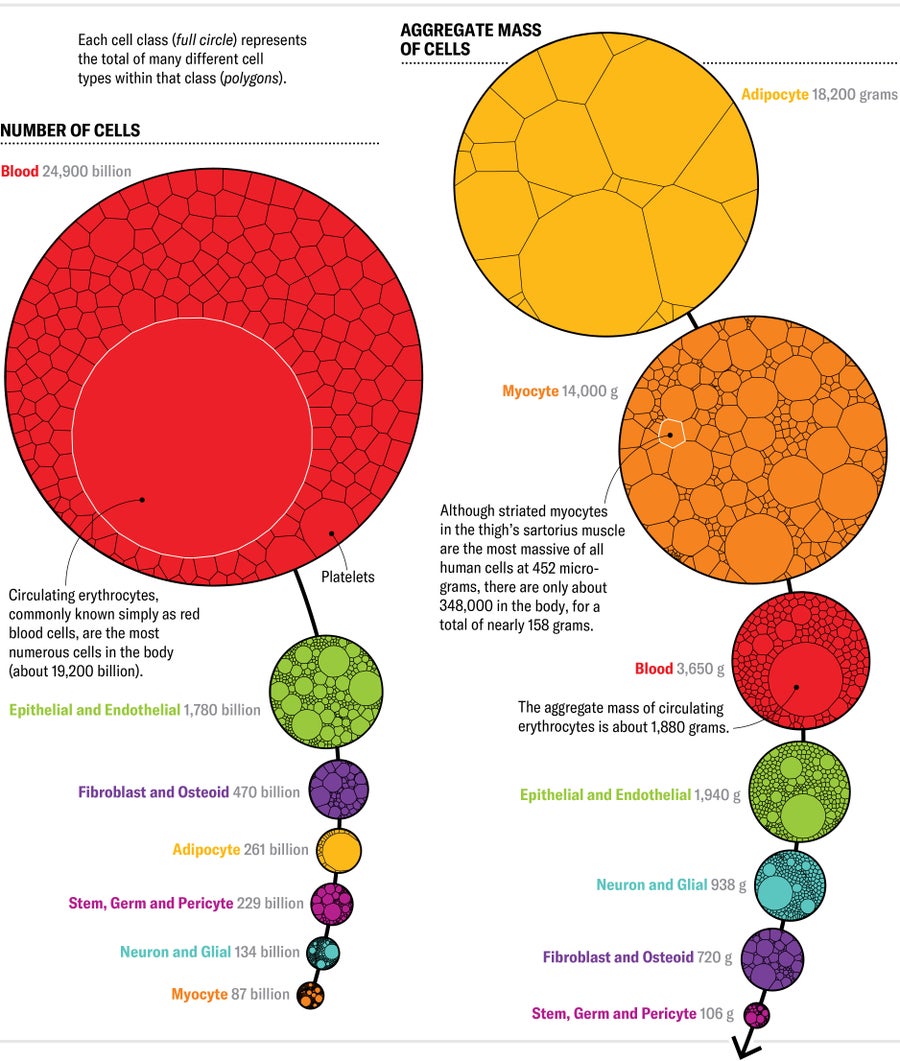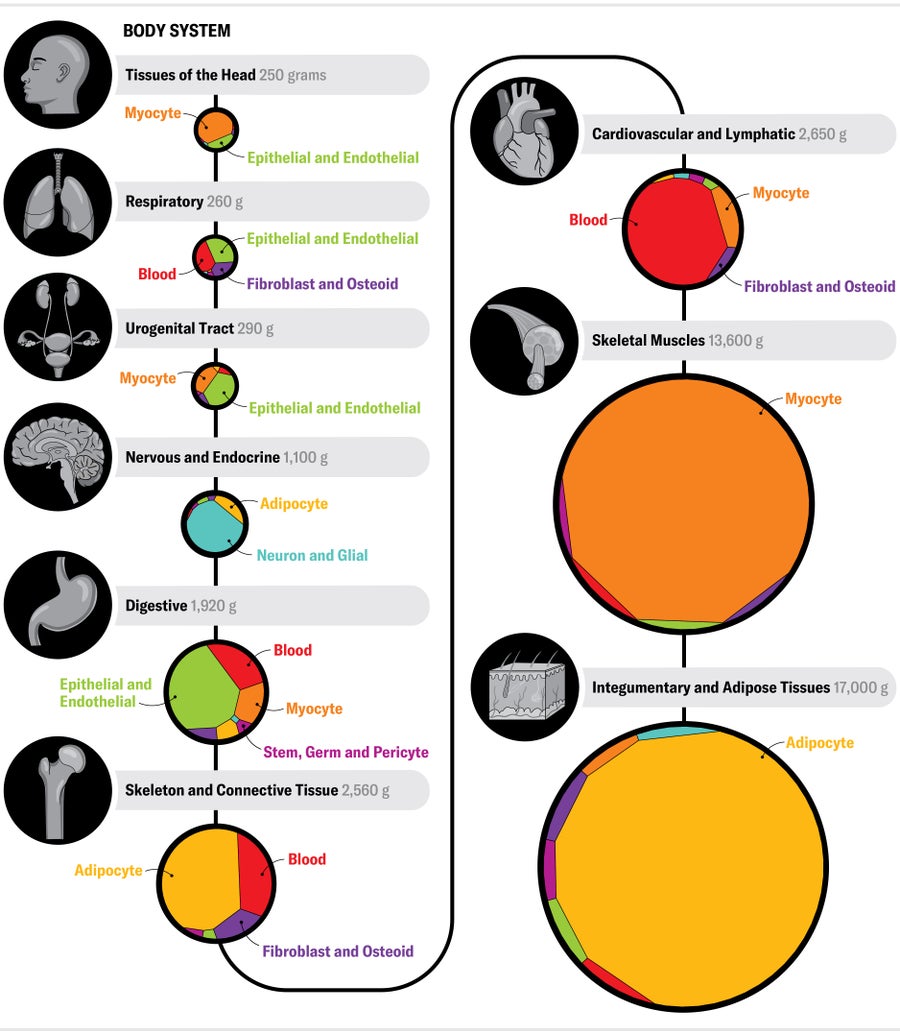BY CLARA MOSKOWITZ, JEN CHRISTIANSEN & NI-KA FORD
Many aspects of our world, from the body mass of creatures in the animal kingdom to the population of cities across the globe, follow an intriguing mathematical pattern. Known as Zipf's law, the rule says that when something's size is doubled, that thing becomes about half as common. Researchers wondered whether the law extended to the human body. Ecologist Ian A. Hatton of McGill University, independent researcher Jeffery A. Shander and their colleagues amassed data about the volume and frequency of human cells and looked for the pattern (reference: https://www.pnas.org/doi/10.1073/pnas.2303077120). It turns out that it holds.
[注:齐普夫定律(Zipf's Law)是美国学者G.K.齐普夫于20世纪40年代提出的词频分布定律。它可以表述为:如果把一篇较长文章中每个词出现的频次统计起来,按照高频词在前、低频词在后的递减顺序排列,并用自然数给这些词编上等级序号,即频次最高的词等级为1,频次次之的等级为2,……,频次最小的词等级为D。若用f表示频次,r表示等级序号,则有fr=C(C为常数)。人们称该式为齐普夫定律。词频分布规律是有较为丰富内涵的,学术界认为正态分布是描述自然科学的典型分布,而齐普夫分布将成为揭示社会科学规律的典型分布,所以社会科学界一直很重视这个定律。]
“As you double the volume of a cell, the frequency of cells of that size is halved,” Hatton says. Teensy, nonnucleated red blood cells are by far the most common cells in our bodies, whereas the comparatively gigantic muscle cells in our arms and legs are the scarcest. Being able to use a cell's size to estimate its frequency in the body could help doctors better understand certain body systems and hard-to-count cell types, the researchers say. The study suggests, for instance, that immune cells called lymphocytes are far more common than biologists realized.
NUMBER AND AGGREGATE MASS OF CELLS IN THE HUMAN BODY, BY CELL CLASS
(Calculated for a 60-kilogram female form.)
These two strands show the hierarchy of cells by number (frequency in the body) as well as by how much total biomass they account for in the body. The discrepancy between the two arises from the fact that the most numerous cells are often very small and therefore contribute only a modest amount of biomass, whereas the more massive cells, though relatively uncommon, make up much of our heft. Total cell mass does not equal total body mass, because bodies also include large volumes of water.
MASS OF BODY SYSTEMS (Calculated for a 60-kilogram female form.)
Different systems in the human body account for differing amounts of our total biomass. The largest system, the integumentary and adipose tissues, consists mainly of skin and fat.



